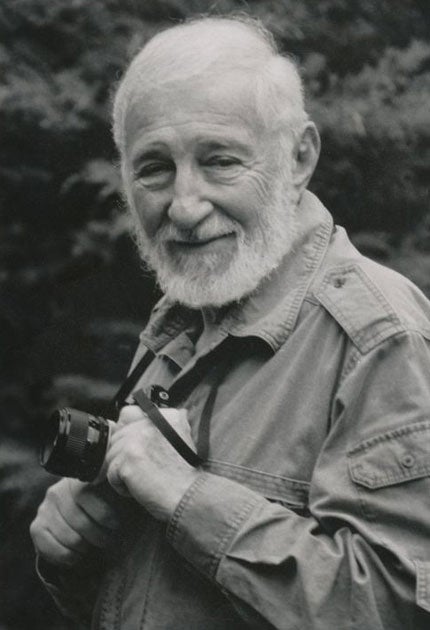Your support helps us to tell the story
From reproductive rights to climate change to Big Tech, The Independent is on the ground when the story is developing. Whether it's investigating the financials of Elon Musk's pro-Trump PAC or producing our latest documentary, 'The A Word', which shines a light on the American women fighting for reproductive rights, we know how important it is to parse out the facts from the messaging.
At such a critical moment in US history, we need reporters on the ground. Your donation allows us to keep sending journalists to speak to both sides of the story.
The Independent is trusted by Americans across the entire political spectrum. And unlike many other quality news outlets, we choose not to lock Americans out of our reporting and analysis with paywalls. We believe quality journalism should be available to everyone, paid for by those who can afford it.
Your support makes all the difference.George Pickow was a photographer and film-maker responsible for images of such musical giants as Nina Simone, Louis Armstrong, Pete Seeger and Dizzy Gillespie. His marriage to Jean Ritchie, from a family of Kentucky Mountain singers, gave him a unique perspective on the lives of musicians, but he also photographed artists, including Edward Hopper, and artisans plying their trade. He also made documentaries, built dulcimers and ran an independent music label.
George Pickow was born in Los Angeles in 1922 but his family moved east and Pickow attended high school in Brooklyn before studying fine art at Cooper Union, on the edge of Manhattan's East Village. During the war he made training films for the navy, then travelled around Europe and Israel. Back in New York he met his future wife, a singer and dulcimer player. After graduating from the University of Kentucky in 1946 she had become a social worker on Lower East Side.
The pair married in 1950 and lived in Greenwich Village, on the corner of Bleecker Street and Seventh Avenue South, a few blocks from where Jac Holzman, the founder of Elektra Records, ran the Record Loft. As Holzman recalled in 2010: "Sooner or later everybody in the very narrow world of city folk came into the store: singers, guitar players, collectors and aficionados like George Pickow."
So it was that in 1952 Ritchie – long before Judy Collins, Tim Buckley, or The Doors – became the act that launched Elektra Records with Jean Ritchie Singing the Traditional Songs of her Kentucky Mountain Family.
By the time the record, arrived in late 1952, George and Jean were in Britain and Ireland on a year's Fulbright scholarship to trace the sources of Ritchie family songs. Pickow's images of musicians and folkways from the Co Armagh to Co Cork leg of their tour now form the Ritchie-Pickow Photographic Archive of the James Hardiman Library at the National University of Ireland, Galway. As he had in Jean Ritchie's Swapping Song Book (1952), he documented not only musicians but also everyday life and work.
Pickow's legacy is immense. With Alan Lomax and Peter Kennedy he co-directed the documentaries Oss Oss Wee Oss (1953), about the traditional May Day celebrations in Padstow, Cornwall, and, with Lomax, Ballads, Blues, Bluegrass (1961). He also contributed to Festival (1967) and No Direction Home: Bob Dylan (2005). His published work included photo essays for Life and National Geographic; and images of such musicians as Little Richard, Sarah Makem, Sonny Terry and Brownie McGhee and Josh White; artists Chaim Gross and Reginald Marsh; and ordinary people at work, weaving, making instruments, churning butter. Other decades-long sidelines were building dulcimers and co-running the label Greenhays.
George Pickow, photographer and journalist: born Los Angeles 11 February 1922; married 1950 Jean Ritchie (two sons); died Roslyn, New York 10 December 2010.

Join our commenting forum
Join thought-provoking conversations, follow other Independent readers and see their replies
Comments